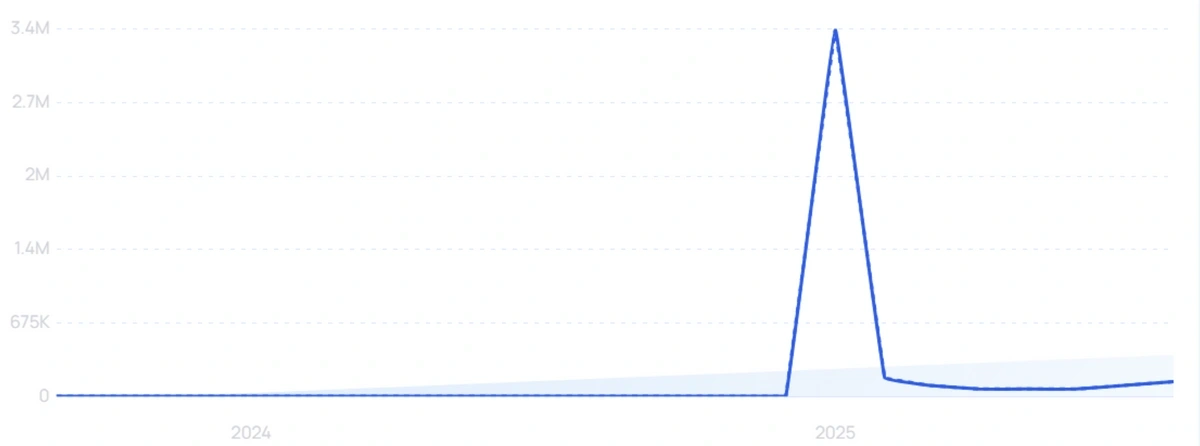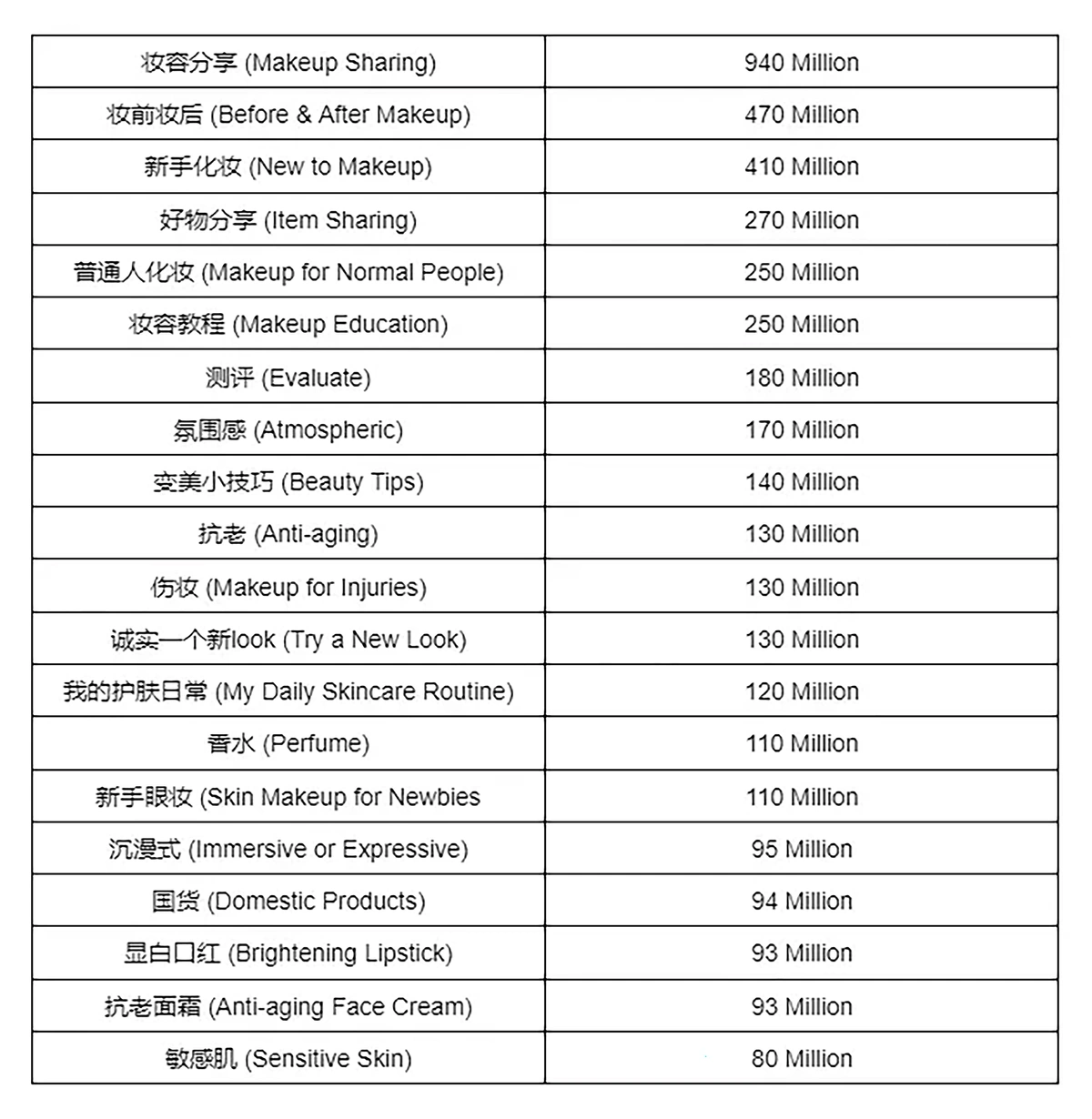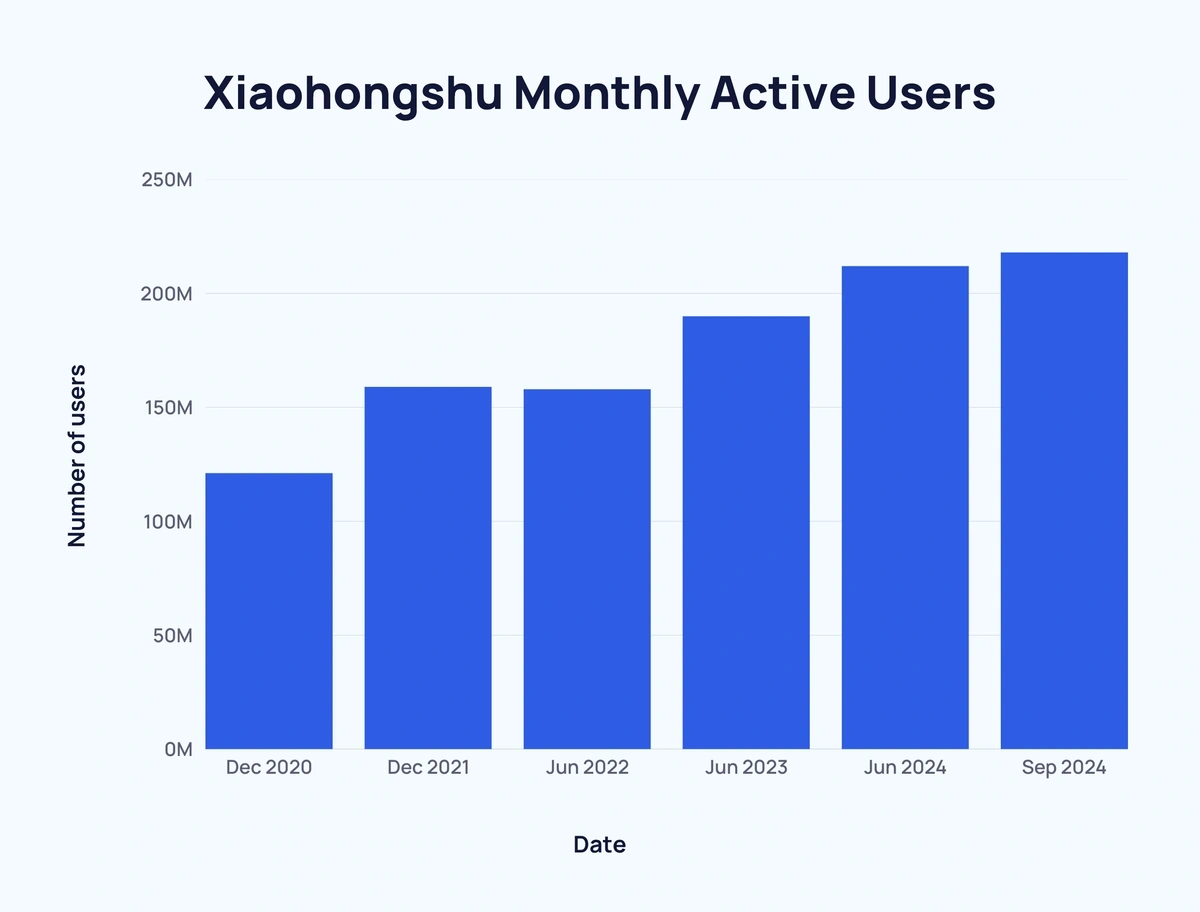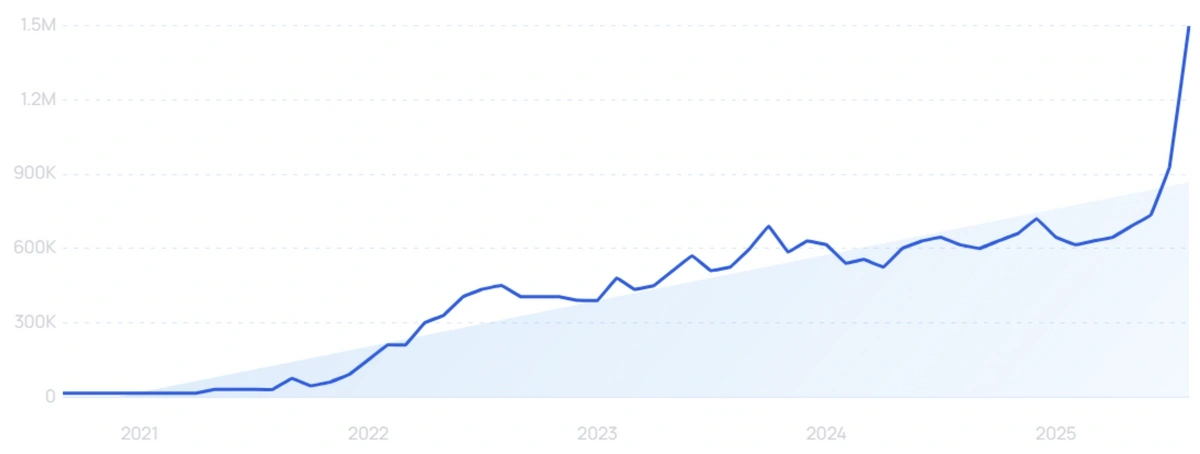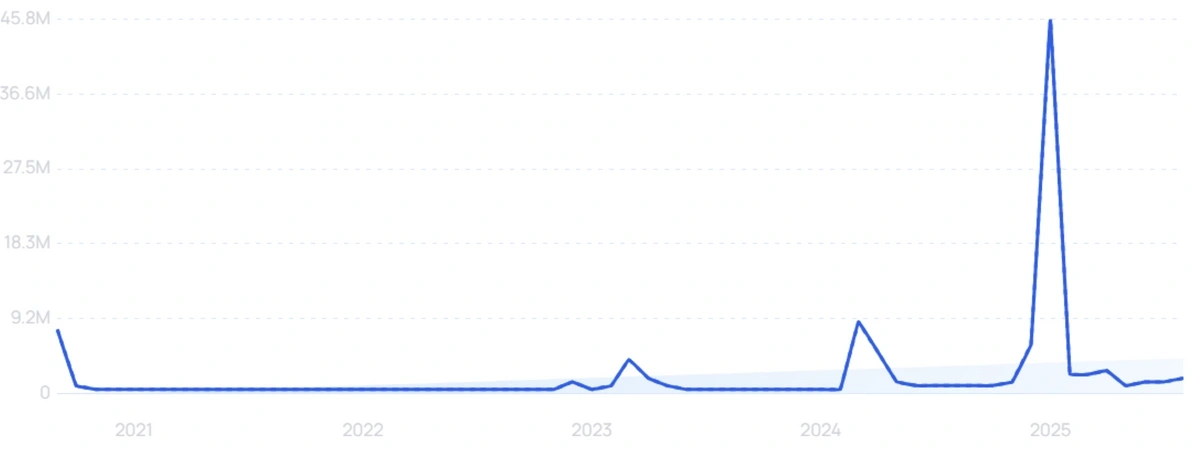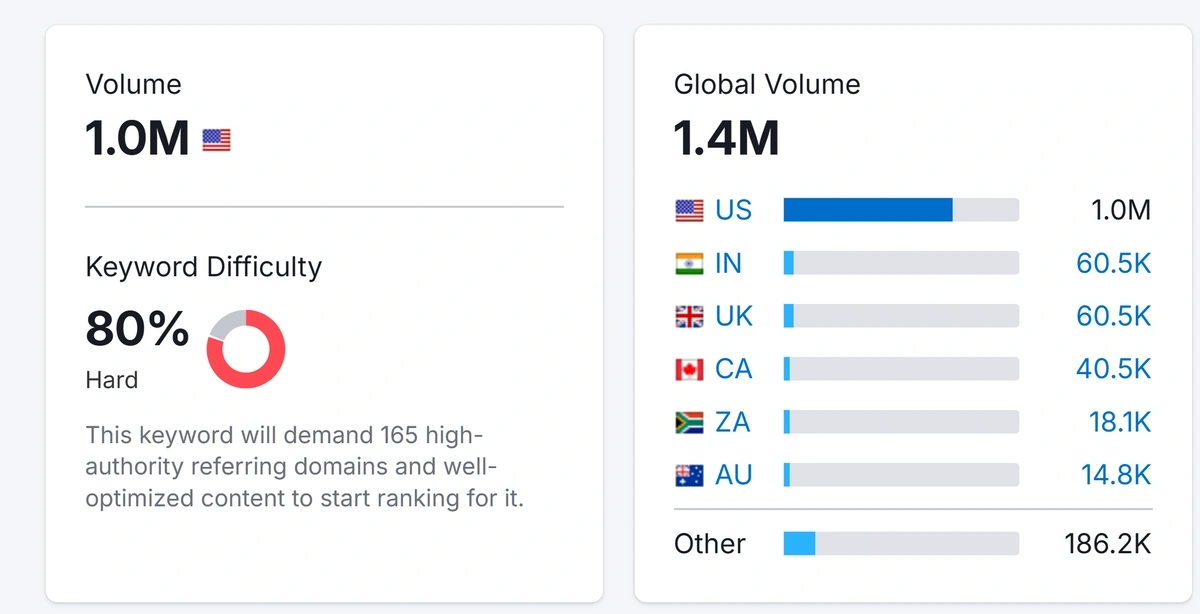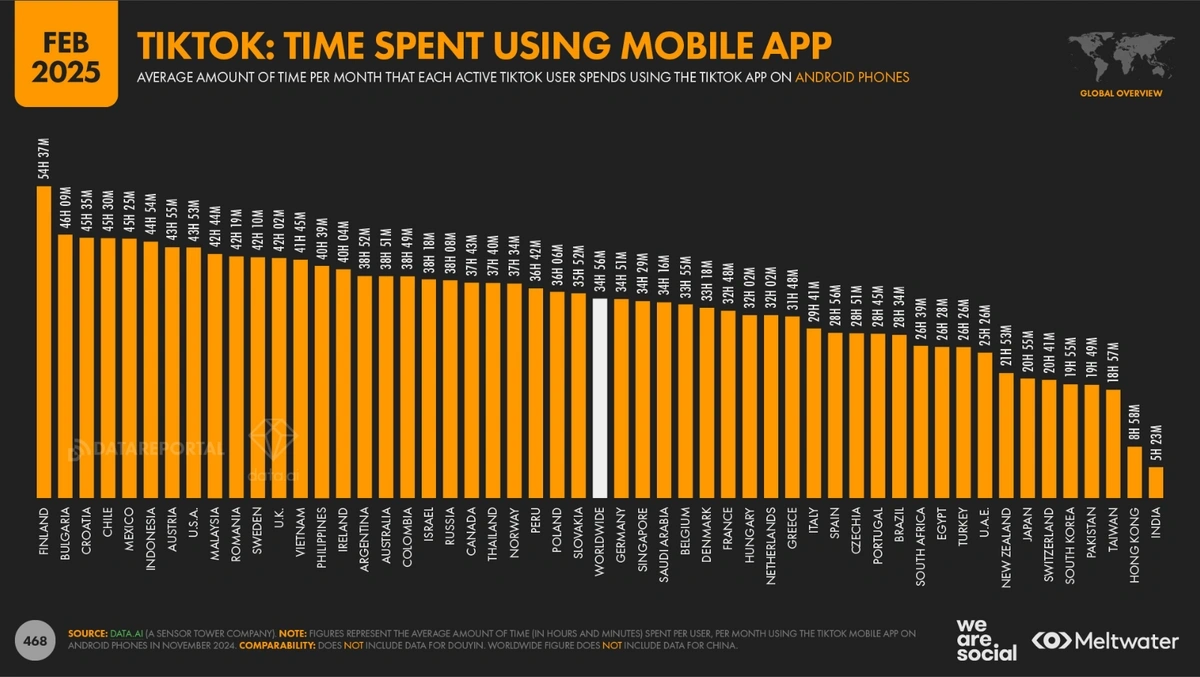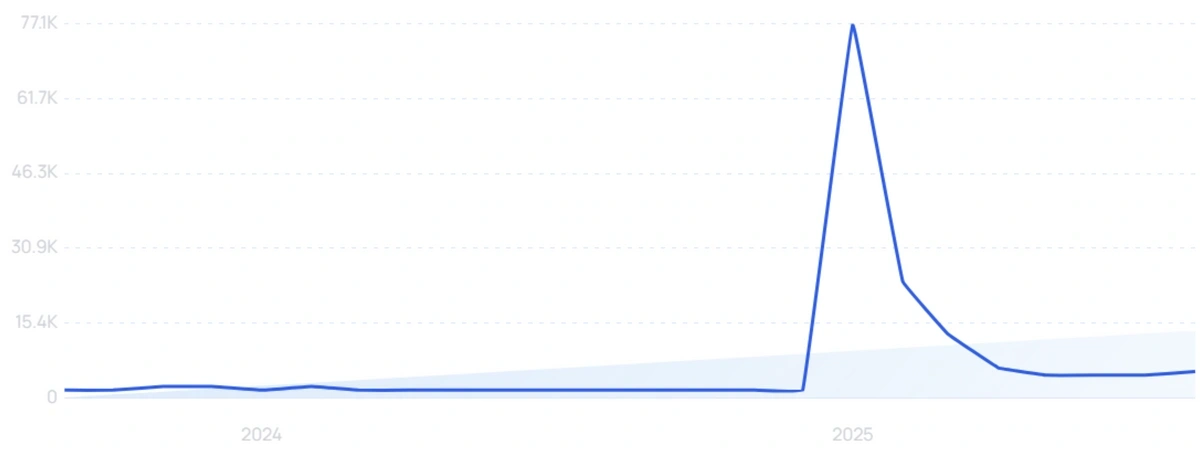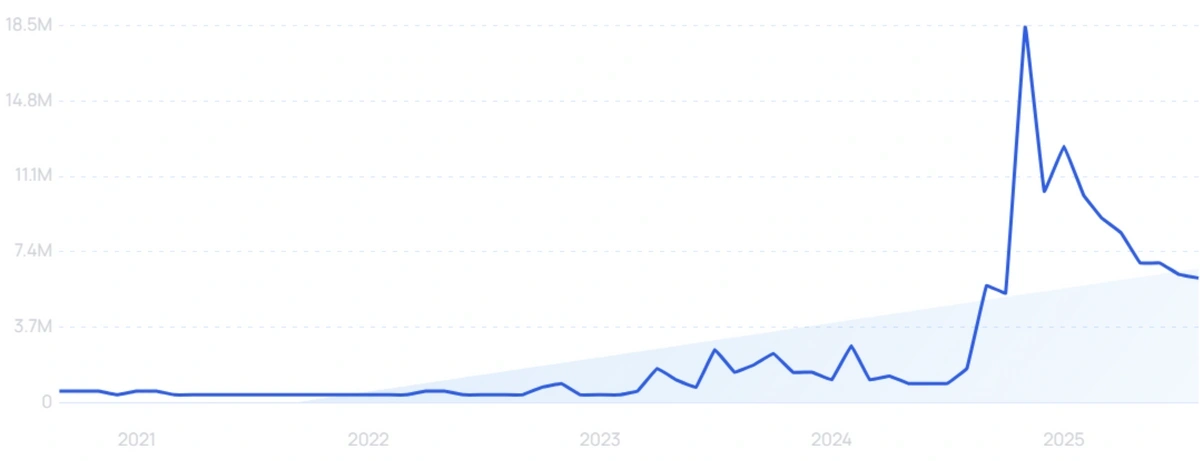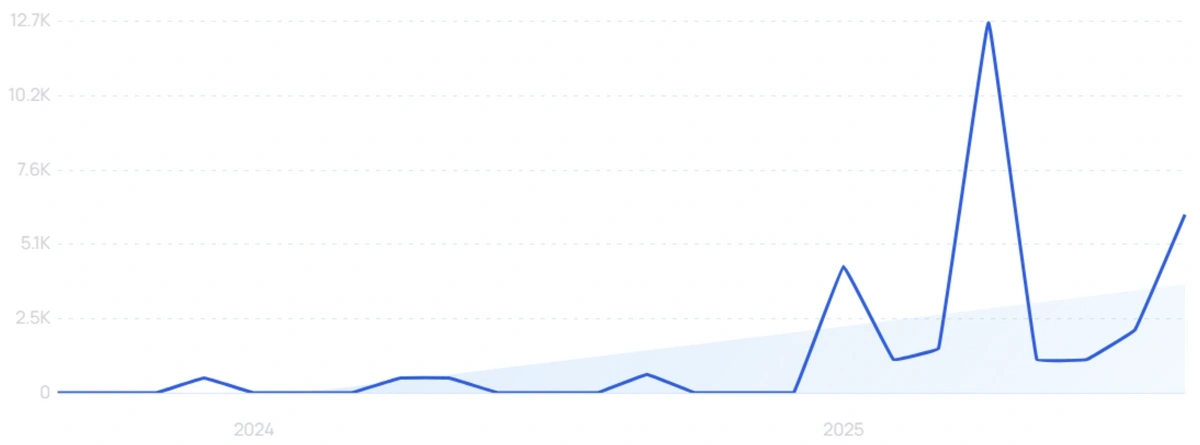
What will happen to TikTok as US ban approaches? A look at trending alternative RedNote
Talk of a TikTok ban in the US back in January caused a surge in interest for Chinese social media app RedNote, with searches shooting up 99X+ in the space of 3 months.
Much like TikTok, RedNote allows users to post short-form videos, and it also supports text and image-based posts. It briefly moved to the top of the free download charts in the Apple Store in the US in the wake of the initial ban date.
Exploding Topics data shows that RedNote searches skyrocketed in the months leading up to the original TikTok ban deadline. In the space of three months, searches increased by 99X+, with monthly search volume for "RedNote App" reaching 3.4 million in January.
“RedNote app” searches spiked at the start of the year, climbing from almost zero searches in December 2024 to around 3.4M the following month.
Semrush is tracking search volume for the "RedNote" brand. It currently receives over 450,000 global monthly searches.
RedNote Stats: Top Picks
- RedNote has 300 million monthly active users
- The "makeup sharing" tag on RedNote has almost 1 billion posts
- More than 10% of all RedNote users are from the US, with 60% from China
- Almost 4 in 10 RedNote users are aged 18-24
- RedNote is valued at approximately $26 billion
The TikTok Ban: State of Play
Initially, TikTok was given a deadline to sell or shut down in the US by January 19 amid concerns over links to the Chinese government. The Supreme Court heard arguments against the ban and upheld it — but Donald Trump has delayed implementation of the law while he works on a “political solution”.
TikTok briefly "went dark" on Saturday, January 18, but service was resumed within 24 hours. That came amid assurances from President Trump.
After that, the deadline on the TikTok ban was extended to April 5th,and then re-extended for a further 75 days.
Another 90-day extension followed, creating a September 17 cut-off for TikTok to be sold. But Trump has now indicated that he will continue to extend the deadline.
The president has also previously hinted that TikTok's parent company, ByteDance, is on the verge of striking a deal. At the time of writing, several high-profile bidders have emerged, including Amazon, and OnlyFans founder Tim Stokely.
But even with the prospect of a genuine ban looking remote, RedNote has seen greatly elevated global interest, particularly among American users. The Chinese app, known natively as Xiaohongshu (Little Red Book), now has 300 million monthly active users.
What is RedNote?
RedNote is a Chinese social media platform. It's an alternative to TikTok (or Douyin, as the native version is known).
It has been described as a cross between TikTok and Instagram. There have also been comparisons to Pinterest, X, and even Tripadvisor.
An image from the Play Store shows the RedNote interface.
Much like TikTok, it has evolved far beyond its original vision. The app was initially named “Hong Kong Shopping Guide” and was designed to serve recommendations to domestic Chinese tourists visiting the region.
Since then, RedNote has become a destination to trade lifestyle tips and short videos. It is particularly popular among young women, with beauty, fashion, food, and travel among the most-discussed topics on the app.
Major tags on posts (translated) include “new mom”, “skin protection party”, “house lover enthusiasts”, and “makeup lover party”. The “makeup sharing” tag has been used in almost 1 billion posts.
Beauty and skincare posts are popular on RedNote.
Unlike TikTok, RedNote is not split into Chinese and global versions. RedNote and Xiaohongshu are different names for the same app, with one unified user base.
How many people use RedNote?
Per an August 2025 estimate, approximately 300 million people use RedNote every month.
143 million of those are daily active users (DAUs). The number of DAUs has grown by 32.4% in the last year.
The bulk of users are from China. The app has approximately doubled its domestic user base since December 2020.
As of September 2024, RedNote (Xiaohongshu) had 218.11 million monthly active users in China. The overall number of monthly users has since hit 300 million.
3.7 million US users downloaded RedNote in Q1 2025. That was up from 508,000 in Q4 2024.
Here's data on RedNote downloads in the US and China from 2015:
| Date | US RedNote (Xiaohongshu) downloads | China RedNote (Xiaohongshu) downloads |
| Q1 2015 | 2,203 | 685,577 |
| Q1 2016 | 17,626 | 1,487,831 |
| Q1 2017 | N/A | 3,351,100 |
| Q1 2018 | 600 | 4,565,319 |
| Q1 2019 | 58,085 | 11,809,312 |
| Q1 2020 | 37,763 | 6,825,386 |
| Q1 2021 | 66,301 | 11,529,289 |
| Q1 2022 | 81,274 | 9,567,858 |
| Q1 2023 | 233,486 | 13,147,506 |
| Q1 2024 | 256,447 | 11,984,395 |
| Q1 2025 | 3,736,975 | 9,126,432 |
The number of RedNote downloads in the US prior to the threat of a TikTok ban is actually surprisingly high, especially from 2023 onward. Even so, the TikTok effect is both obvious and stark.
“TikTok refugees” became a trending topic on RedNote. A live chat with that title attracted more than 50,000 users from both the US and China.
But while search interest has massively dropped as the threat of a TikTok ban has receded, RedNote has continued to benefit from the boost in awareness and perceived legitimacy. In August, Apple launched an official account on the platform, quickly hitting 200,000 followers.
And the users who have stayed on the platform are highly engaged. In July 2025, Semrush traffic data showed that users spent an average of 19 minutes and 26 seconds per visit on RedNote, accessing an average of 10 pages.
More than 10% of those users are from the US, making it the second-largest user base worldwide. 60.19% are from China.
Want to Spy on Your Competition?
Explore competitors’ website traffic stats, discover growth points, and expand your market share.
RedNote users by age
RedNote, much like TikTok, is favored by younger users. Just 8.2% of users are aged 45 or older.
The biggest age group on the app is 18-24. This slice of Gen Z makes up 39.21% of all RedNote users.
RedNote is also popular with millennials. 38.65% of users are aged between 25 and 34, and 13.92% are aged 35-44.
RedNote users by gender
In China, RedNote is heavily favored by women. At one stage, the user base was 90% female.
As of last year, 79.1% of all users were women.
It will be interesting to see how the influx of US users affects this balance. The TikTok user base skews in the other direction, where 54.8% of users are men.
Semrush data suggests that the split has shifted to a far more even balance. 52.99% of recorded users are women, while 47.01% are men.
Who owns RedNote?
Miranda Qu and Charlwin Mao founded RedNote in 2013. Qu is its current president, and Mao is the CEO.
According to Forbes, Qu and Mao each own an estimated 10% of RedNote.
RedNote has numerous external investors. They include Chinese tech giants Alibaba and Tencent.
Questions have been asked about national security in the US. The Chinese government has previously taken “golden shares” in subsidiaries of both Alibaba and Tencent, although neither company is state-owned. Likewise, there is no indication of any state involvement in RedNote.
However, there is no doubt that RedNote has been aimed at a primarily Chinese audience until now. Most of the content is in Mandarin — the language has even seen a noticeable search spike following the influx of US users on the app.
“Mandarin” searches spiked to a 15-year high at the start of 2025.
The most recent funding round valued RedNote at $17 billion, while market transactions in June implied a valuation of $26 billion. Revenue in the first quarter of last year topped $1 billion, representing a profit of more than $200 million.
Social commerce on RedNote
According to Reuters, the prevalence of aspirational, luxury-focused posts on RedNote has made it fertile ground for social commerce, where users make purchases directly from the app.
(That’s also been a significant trend on TikTok, where over $1 billion of monthly revenue could have been wiped out by a US ban.)
“TikTok Shop” searches are up 99X+ in the last 5 years.
Companies like L'Oréal have set up stores on RedNote, and over 170,000 brands have a presence of some sort on the platform. One estimate suggests global gross merchandise value on the social app will exceed $100 billion in 2025.
Hangzhou Onechance Tech Corp, a Chinese e-commerce services provider, saw its stock soar amid the surge in popularity of RedNote in the US.
Why did TikTok get banned?
There is more than a hint of irony in the fact that the TikTok ban is pushing users toward RedNote. The US sought the ban in the first place over fears about Chinese involvement.
Indeed, it seems likely that the surge in RedNote interest is at least partly a kind of protest against the ban, with US users deliberately seeking out another Chinese platform.
TikTok is owned by ByteDance, which has consistently denied links to the Chinese government. It has also argued that closing down the app would affect the free speech rights of its US users – a point supported by numerous content creators.
The bill requiring ByteDance to sell by January 19 was signed into law by Joe Biden last April. Congress included the condition as part of wide-ranging legislation that determined foreign aid packages for Ukraine and Israel.
“TikTok ban” search interest spiked as the initial deadline drew nearer.
Will TikTok get banned again?
US TikTok users did see service to the app cut off for a matter of hours. It had been speculated that the ban would only initially impact the availability of TikTok on the App Store and Google Play, but ByteDance shut it down entirely.
However, service was restored very quickly, with the app displaying a message that thanked Trump by name. Despite initially supporting a ban, he has indicated his intention to keep TikTok operational in the US.
Talk of a TikTok ban has certainly caught the attention of the general public, with 1.4M monthly global searches.
“TikTok ban” search interest broken down by nation.
It wasn't entirely clear how the president would block the implementation of a law that was passed by Congress and backed 9-0 by the Supreme Court. But his assurances convinced ByteDance to make the app available in the US again, and he has since been able to repeatedly use executive power to extend the ban deadline.
But if a deal to sell TikTok does not materialize before September 17, the ban will be under discussion once more. Trump may well extend it again, but this will attract increasing scrutiny, with the basis of his power to delay still questionable.
TikTok is not the first social media platform to get banned. We've tracked banned apps around the globe.
How popular is TikTok in the US?
A potential TikTok ban in the US is highly significant. The social video app has risen to rival Instagram in terms of popularity.
TikTok currently receives 2 billion monthly visits. The US accounts for more than 400 million of those visits.
There are 146 million American accounts on TikTok. The gap to Instagram (179.9 million) has widened in recent months, but still equates to more than half of the US adult population — although not every individual account is necessarily a unique user.
And TikTok users are highly engaged when compared to social media users more generally.
Active Instagram users in the US average 11 hours and 55 minutes on the platform per month.
As of February 2025, active TikTok users average 43 hours and 53 minutes, up from 41 hours and 42 minutes in October 2024.
Americans are way above the worldwide average when it comes to spending time on the TikTok app.
When it comes to monthly app sessions, US TikTok users have actually fallen behind the global average of 358.7 monthly sessions. Nonetheless, the latest data has shown an increase from 238.1 monthly sessions to 268.9 in the space of four months. By comparison, US Instagram users average just 202.1 monthly sessions.
And while the Asian market is still more mature when it comes to social commerce, TikTok Shop sales in the US reached $100 million on Black Friday alone last year – a 179% year-over-year increase.
There’s no denying that a US ban on TikTok would be highly significant, both culturally and economically.
Bluesky, Pixelfed, and other “alternative” social platforms
A nationwide ban on a major app like TikTok would be unprecedented. But this is not the first time that US users have found themselves looking to alternative social platforms.
Pixelfed is a decentralized alternative to Instagram. The social network runs on independently-run servers rather than a centralized server owned by a specific entity, and its code is open-sourced.
There has been a recent spike in “Pixelfed” search interest.
In terms of features, Pixelfed operates a lot like Instagram. So much so, in fact, that Meta (owners of Facebook and Instagram) briefly started blocking links to it.
Meanwhile, there has been something of an exodus from X (formerly Twitter) since Elon Musk took over the platform.
In the year leading up to September 2024, the number of daily active X users in the US fell by around 20%. In the UK, that figure was close to 33%.
Bluesky has proved a highly popular alternative. Like Pixelfed, it is an example of decentralized social media.
“Bluesky” searches are up 1,000% in the last 5 years.
It was founded by Jack Dorsey, a Twitter co-founder. It began life as an internal Twitter project before being spun off, operating similarly to the pre-Musk version of the platform.
Bluesky now boasts over 38 million users. A new user joins every second. And Bluesky recently launched its own photo sharing app, Flashes, which could provide an Instagram alternative.
In January 2025, Bluesky launched its own video feed feature.
Another TikTok alternative garnering interest is Skylight Social.
“Skylight Social” searches are up 2300% in the last 3 months.
Built on Blueksy's AT Protocol and backed by Mark Cuban, the new social platform officially launched on April 1st.
As a result, the video-based app can instantly tap into Blueksy's growing 38 million-strong user base.
Is RedNote the new TikTok?
US social browsing habits clearly can and do change. And a TikTok ban would be a pretty significant catalyst.
Even so, all things considered, RedNote is unlikely to capture vast swathes of the US TikTok user base in the long term. But it’s fascinating to see users migrating to the platform amid the threat of a ban.
At the moment, the app is still geared firmly toward a Chinese audience. It will need to adapt quickly if it wants to attract and retain “TikTok refugees” from the US.
RedNote is also not a completely obvious alternative to TikTok in terms of functionality. There are definite similarities, especially when it comes to elements like the integration of social commerce, but the platform was more frequently being compared to Instagram until very recently.
Bluesky looks and functions almost exactly like X. Pixelfed is highly familiar to Instagram users. But RedNote is not trying to “replace” TikTok in the same fashion, so users looking for a direct alternative might be disappointed.
Finally, and most crucially, TikTok’s fate in the US is far from sealed. The app appears to have some more time to find a resolution under a sympathetic Trump administration.
But the TikTok ban has cast a spotlight on RedNote, which was already a major player on the Chinese social scene in its own right. It will likely continue to grow, perhaps even with an increased US and global user base.
Whatever happens with TikTok in the US, RedNote is certainly a platform worth keeping an eye on in the coming years.
Stop Guessing, Start Growing 🚀
Use real-time topic data to create content that resonates and brings results.
Exploding Topics is owned by Semrush. Our mission is to provide accurate data and expert insights on emerging trends. Unless otherwise noted, this page’s content was written by either an employee or a paid contractor of Semrush Inc.
Share
Newsletter Signup
By clicking “Subscribe” you agree to Semrush Privacy Policy and consent to Semrush using your contact data for newsletter purposes
Written By


James is a Journalist at Exploding Topics. After graduating from the University of Oxford with a degree in Law, he completed a... Read more

